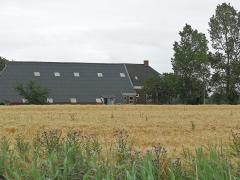Spatiotemporal dynamics of soil phosphorus and crop uptake in global cropland during the 20th century
Phosphorus (P) plays a vital role in global crop production and food security. In this study, we investigate the changes in soil P pool inventories calibrated from historical countrywide crop P uptake, using a 0.5-by-0.5 degree spatially explicit model for the period 1900–2010.
Globally, the total P pool per hectare increased rapidly between 1900 and 2010 in soils of Europe (+31%), South America (+2%), North America (+15%), Asia (+17%), and Oceania (+17%), while it has been stable in Africa. Simulated crop P uptake is influenced by both soil properties (available P and the P retention potential) and crop characteristics (maximum uptake).
Until 1950, P fertilizer application had a negligible influence on crop uptake, but recently it has become a driving factor for food production in industrialized countries and a number of transition countries like Brazil, Korea, and China.
This comprehensive and spatially explicit model can be used to assess how long surplus P fertilization is needed or how long depletions of built-up surplus P can continue without affecting crop yield.
Authors
Specifications
- Publication title
- Spatiotemporal dynamics of soil phosphorus and crop uptake in global cropland during the 20th century
- Publication date
- 20 April 2017
- Publication type
- Publication
- Magazine
- Biogeosciences, 14, p. 2055–2068
- Product number
- 2907




